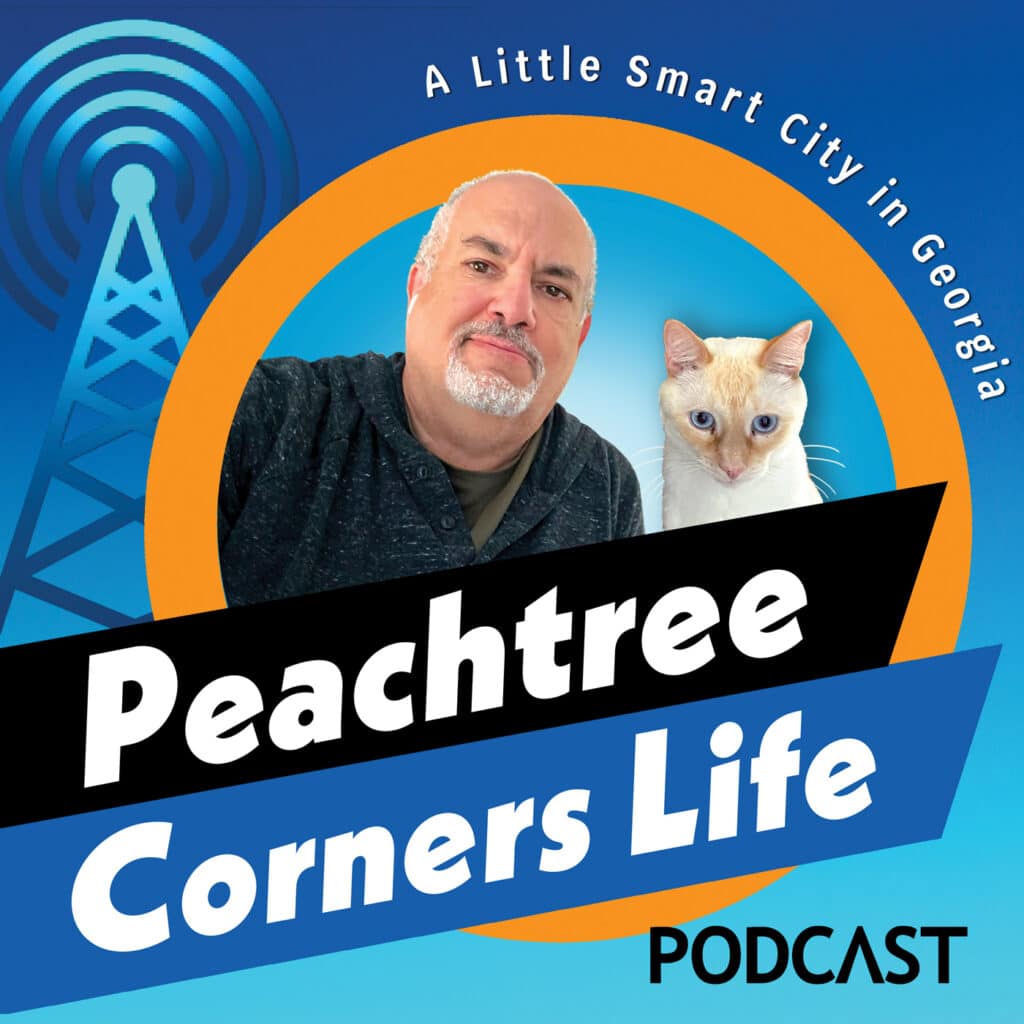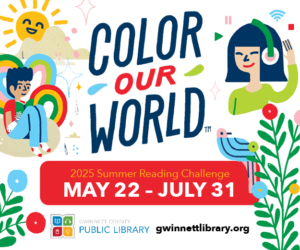Arts & Literature
Wesleyan Artist Market: Elizabeth Ables Talks about Art, Chemistry and Inspiration [Podcast]
Published
3 years agoon
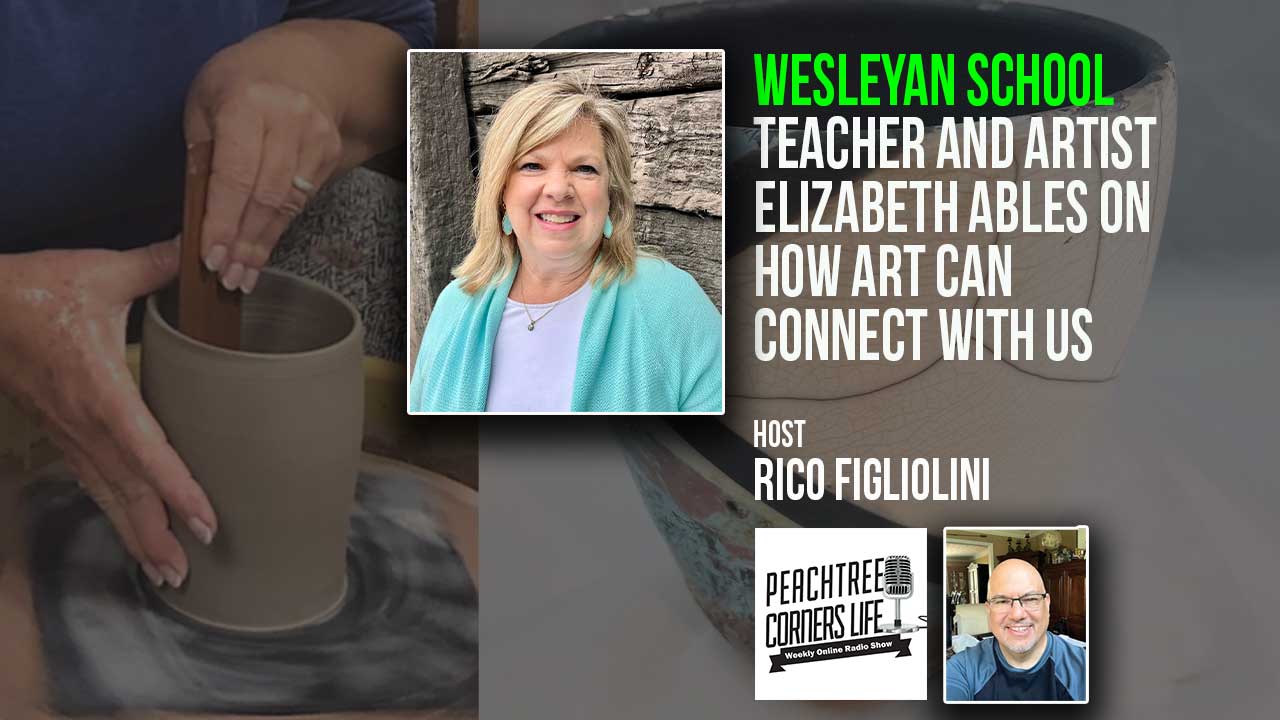
Elizabeth discusses the Market, her background and inspiration, and the impact that art has on our lives.
We’re talking with another artist to be featured at the Wesleyan Artist Market. Elizabeth Ables is an artist working primarily in pottery, but she is also a teacher to the young artists attending Wesleyan School. Rico and Elizabeth discuss the Market, Elizabeth’s history and inspiration, and the impact that art has on our lives.
Resources:
Elizabeth’s Instagram: @Ables.Elizabeth
Wesleyan Artist Market: https://www.artistmarket.wesleyanschool.org/?fbclid=IwAR1CHO4OSbMxutNgMGk3X9B2YXFsOJiXVhjXvhu7jQ3fbqenUlW-bemPSSc
“There’s always a risk that a piece is going to crack and that you’re not going to get the color that you want to. But then with experience, you realize it’s just clay. I can make it again. And I can try again. And sometimes you get happy accidents, where it might not have been what you were planning for, but what you ended up with was beautiful in its own right… It’s just like life in that sense. But if you’re open to what you get, often it’s so much more beautiful.”
Elizabeth Ables

Timestamp:
[00:00:30] – Intro
[00:01:58] – Being an Artist and a Teacher
[00:03:50] – Raku Pottery and Technique
[00:07:49] – Elizabeth’s History and Inspiration
[00:11:18] – Teaching Young Artists
[00:18:18] – Wesleyan Artist Market
[00:22:11] – Fun Facts about Elizabeth
[00:25:04] – Closing
Podcast Transcript
[00:00:30] Rico: Hi everyone, this is Rico Figliolini, host of Peachtree Corners Life. The podcast that covers everything about Peachtree Corners, here in the great state of Georgia. Today, we have a special guest because it’s artist month, right? Wesleyan Artist Market will be held at the end of this month and so we have one of the featured artists here today to talk to us about her art and about Wesleyan Artist Market. But before we get to that, I wanted to thank one of our supporters, EV Remodeling. Content is supported here by community-minded companies and organizations like EV Remodeling that help us produce editorially independent content. They are companies that underwrite us in additional ways beyond print advertising. And Eli, from EV Remodeling has come on board as a great sponsor of ours. Not only for the magazine, our new launch of a new magazine coming out in May called Southwest Gwinnett Magazine, but as well as these family of podcasts. So I want to thank them for their support. To find out a little bit more about their work and the philosophy of designing your space to design your life, check out Eli’s website at EVRemodelingInc.com. So thank you Eli, I appreciate your support. I want to bring on our artist. Hey, Elizabeth, how are you?
[00:01:44] Elizabeth: I’m good, thank you. How are you this morning?
[00:01:46] Rico: Good, good. You’re one of three artists that we’re profiling in the latest issue of Peachtree Corners Magazine. That should be hitting the mailboxes this weekend.
[00:01:57] Elizabeth: I got mine yesterday.
[00:01:58] Rico: Did you really? Good. The Post Office is working overtime then. That’s good. That’s great. So, and that was written by Patrizia Winsper who’s done some great work. And she’s done, I guess the articles of profiles of artists for the last three years running for us. And I do appreciate you being on our podcast. I think we had, there were two students that we had from Wesleyan Artist Market just a few weeks ago on our podcast to talk about their work. So it’s good to have, not only are you an artist, but you work for Wesleyan School as well, right?
[00:02:28] Elizabeth: I do. I’m the elementary art teacher. And so some of the students that are now participating as artists were some of my students when they were much younger. And it’s so amazing to be able to watch their talents grow and to see their inspiration and to see kind of the, just the direction that they take. And some of them may choose to continue on with design and with art. But they’re all just so incredibly talented that it’s, that’s one of the cool things about this art show is that you do get to see some emerging artists as well. And the community gets to celebrate the arts here in the springtime and see such a variety.
[00:03:04] Rico: Yeah. Interestingly enough, I mean, some people think art is just paintings, drawings, and maybe pottery. But there’s a whole world out there of stuff. I mean, one of the kids does seamstress work and creates through fabric, creates her art.
[00:03:18] Elizabeth: Yes. And you think about our world nowadays with social media, there is so much visual communication. And we are all drawn to things that are attractive or have something that connect with us. Well, that’s an artist who designed it.
[00:03:33] Rico: Yeah. From their perspective and what they see, the experience of creating the art. You know, I think one of the things Patrizia quoted you about is that art, if you want perfect you buy the manufactured pieces. There are a thousand molds just pieces, right?
[00:03:49] Elizabeth: Exactly.
[00:03:50] Rico: Because it was interesting to just, to read that article about the way you work. And the way pottery, the way glass, the way artwork, when you’re firing up artwork even, how number one, it could be explosive in so many different ways, right?
[00:04:05] Elizabeth: Yes, exactly. And very unpredictable.
[00:04:09] Rico: Yes. Unpredictable. Where you might start out with what you think is a blue and chemistry will and fire will show you that no, it’s a red.
[00:04:18] Elizabeth: Yes. And within the pottery world, specifically what I was talking about there, I was talking about Raku. Which Raku is very environmental that’s where it’s more unpredictable. In an electric or a gas kiln, which is the firing process, it is more predictable. And the chemicals that go into the glazes, you know the range that you could get. So speaking of this particular range in the Raku firing, I know if I don’t put it in reduction, which is putting in one of those containers where there are combustible materials and you put a lid on it. So the fire sucks out, uses up the oxygen, sucks out certain particles, certain minerals in the glazes. You kind of know the range that you’re going to get, but it is still unpredictable. And where that range is going to hit. Like, where is there a hotspot in the fire? And that sort of thing. And so whether your item is in the top of the kiln or on the bottom of the kiln. How fast it cools, how fast you put it in reduction, if you’re doing Raku, all of that impacts the coloration and where it’s going to be. So you can know a range is basically what you’re going to get, but you it’s unpredictable.
[00:05:26] Rico: Amazing. It’s so you’re, when people see movies where people are making pottery and stuff, and then they have to have to kiln it, they have to like bake it if you will. Yeah.
[00:05:39] Elizabeth: Exactly. And so one of the things, you know, that movie everybody thinks of, gosh, there was that one movie with Demi Moore and Patrick Swayze, and it really is very kind of sensual and informing it and very meditative, very cathartic. And so that part was so true. Ghost, that was the movie. That part is so true. And it just, the feeling of it, you just really can get lost in what you’re doing.
[00:06:04] Rico: You do your work at, I think, if I understand correctly Spruill Art Center.
[00:06:08] Elizabeth: I do. Mostly because, in my classroom here at school, I don’t have a wheel. It takes more strength. And so that’s going to be in the upper levels. And so I do hand building with my students. And that’s where they basically, they make pancakes and turn it into something. They form a, what’s called a pinch pot, which is a centuries old process of starting with a ball and then forming it with your thumbs and your hands to form a pot. Then you can do coils. That’s the way we work here and that’s learning the fundamentals of clay. And that’s what I started with when I was learning clay as well, was learning the fundamentals of hand building. And then I went into the wheel or throwing pottery. And that takes a lot of strength and it, the key to that is really being able to center your clay. So trying to get it completely in the middle and get it smooth. And that takes a lot of practice and skill and strength.
[00:07:03] Rico: I would imagine if you didn’t have a good day, going to do that may not turn out well, or it could turn out well, I guess.
[00:07:09] Elizabeth: Exactly. Some days you get to the wheel and you’re just like, wow. Things are just not quite working today. And then other days you do something and you’re forming it and in 15 minutes you get a beautiful pot and you’re like, wow. I’ve got the feel today, so.
[00:07:23] Rico: I think anyone with a passion, whether it’s sports or it’s art, when they’re at that plate or they’re on that field or they’re at that seat, creating something. If it’s not your day, it’s not your day, right? To be able to create what you need.
[00:07:38] Elizabeth: Yeah, we really do. We have days where somehow it’s all clicking, you’re focused, you’re in a feel, and you keep going. And then other days you decide it’s time to clean your bucket and go with something else.
[00:07:49] Rico: You’ve had experience in different art work out through the years. I understand that you moved here to Peachtree Corners maybe about 28 years ago?
[00:07:56] Elizabeth: Yes, I did. I’ve been in Atlanta since ’87.. And so, but I was in the Dunwoody area as opposed to up here in Peachtree Corners. And I did many different art forms through the years. One thing I did a lot of heirloom sewing, hand embroidery, hand dying, antique laces and things like that. And I’ve done some painting.
[00:08:16] Rico: Okay. But you’re settling on the work you’re doing now. And what is it? I would say pottery, but what, how would you describe it? Like, the work?
[00:08:26] Elizabeth: Yeah, pottery. I love, I love finding beauty in functional items. I’m not as much a sculptor for a, so I’m not looking for abstract. Even though some of the Raku pieces are more decorative than they are functional, due to their surface nature. But I just love having beautiful functional things around. And that’s kind of what got me started, is wanting to be able to make those things that I could envision in my head. You know, little bowls on the counter that you want to put your recycling in or something, just that simple kind of stuff. But I wanted something really pretty and I wanted it sort of organic. I didn’t want it commercial. I wanted to kind of come up with the vision, the size, the color, the texture, all of that, that I wanted on my own.
[00:09:07] Rico: So is it fair to say you get your inspiration from everyday life or the?
[00:09:12] Elizabeth: I do. I really get most of my inspiration probably from nature. I’m very much an outdoor kind of person and just love the beautiful colors that we find in nature, birds. The ocean is a big inspiration, and that’s one of the things that I’m constantly trying to replicate in my glazes, is kind of just coming up with those colors of the ocean and the blended colors. So not really a solid, but blended. And textures from nature like bark. Yeah.
[00:09:38] Rico: So that must be difficult because talking about the color before, and how chemistry is a big part of this, and fire, and heat, and being able to stop the reaction. Does it get easier with experience or is it still hit or miss to where you feel?
[00:09:53] Elizabeth: It gets easier with experience, but there is some hit or miss to it. You’ve just got to know that there’s a certain amount of unexpected and there’s always the risk. There’s always a risk that a piece is going to crack and that you’re not going to get the color that you want to. But then with experience, you realize it’s just clay. I can make it again. And I can try again. And sometimes you get happy accidents, where it might not have been what you were planning for, but what you ended up with was beautiful in its own right.
[00:10:24] Rico: A delightful surprise.
[00:10:26] Elizabeth: Exactly. It’s just like life in that sense. And that you you’ve got these plans, but it doesn’t always work out that way. But if you’re open to what you get, often it’s so much more beautiful.
[00:10:39] Rico: So do you find yourself sometimes driving or doing things and then all of a sudden think things, like darn, well next time I think I’m going to try to put horse hair on the layering of the pot to see if that burns off and becomes. Do you think like that? Is that something you do in the middle of?
[00:10:55] Elizabeth: Yes, but I certainly cannot claim to have inspired and created that process of the horse hair. Like that goes back hundreds of years, I believe in Japan. So, no, I don’t claim that. But I would love to say, you know what, I’d love to do this and see what would happen if I do this. And maybe if I put just a little, or if I put a lot or if I do this kind of a shape, how is it going to change?
[00:11:18] Rico: Now you have young kids you’re teaching and they’re going through the process.
[00:11:22] Elizabeth: Yeah. My children, my students are young kids. My children are in their late twenties.
[00:11:26] Rico: That’s what I meant your students at Wesleyan. And I grant that they’re doing the basic work. But do you find that some of the students that come back to you have done more? Have done other things?
[00:11:38] Elizabeth: Oh, absolutely. Absolutely. Where they get to go on and they learn more and they experiment more, they develop more skills and develop their confidence to be able to go in the direction that they envision. You know, it takes a lot of confidence for children to risk failure to be able to create art. Cause you’ve got to fail a lot of times as we all know. And so, to be able to see them when they get up potentially to their AP art and they do it in AP 3D Art. I mean, there was just a special student a couple of years ago and he’s at Kennesaw and he was just making some glorious things and just getting so intuitive with his forms. And then how he was altering those forms to represent an idea that he had was just so heartwarming and that, it’s just exciting to see.
[00:12:29] Rico: So as a teacher, do you find some of them coming back or sharing things with you?
[00:12:33] Elizabeth: Oh, absolutely. I follow some on Instagram and to see what they’re doing. I’ve got a little student now that was always enamored with birds and she’s going to be a participating artist in the show and she has got some beautiful pieces showing birds. And now she’s doing them, not in a traditional sense, but she’s got her own view on how she’s presenting them. And that’s what an artist does, is sees things differently and helps other people see things in a different way through their art.
[00:13:02] Rico: Right. So, and the kids that you teach now, how old are they? What age?
[00:13:06] Elizabeth: Kindergarten through fourth grade.
[00:13:07] Rico: That’s definitely a certain perspective different from high schoolers and middle schoolers, I’m sure.
[00:13:13] Elizabeth: Yeah. You know, in some of the ways they’re more free. They just, they have no problem painting horses blue and doing all sorts of things, you know? But then as they do get a little bit more fourth grade, that’s when the inhibitions and the insecurities of comparison to fellow students comes in. So that’s when they start to withdraw a little bit. But my goal as the teacher is hopefully to give them skills and confidence and courage to be able to work through that, to be able to get past that fear of failure and realize, it’s just paper, it’s just ink, it’s just pottery and clay. And that’s how you know, I’m going to learn.
[00:13:49] Rico: You know what I think also as they get older, I mean, I’ve been speaking to my daughter lately, she’s a psych master. So we sit down and we talk for an hour sometimes about stuff. And we talked about how, when you’re younger, you see things much differently than an older person. Because an older person has so many years of experience and also years of a perspective, right. Which is a lot different than younger people. They, younger people see things very differently, I think. Because they’re on that other end of life, right? And so sometimes, so I have a young son that also writes, and sometimes they don’t want to share this stuff. Because, you know, it’s just like, well, what are you going to think about it? Or what are you going to think about me reading this, you know?
[00:14:32] Elizabeth: Yeah, you’re opening yourself up to being vulnerable to people. And that opens yourself up for judgment. It opens yourself up for failure and it brings out the insecurities that we all inherently have.
[00:14:44] Rico: Yeah, because art is personal, right? I mean, you do something and I’m sure you pour your heart into something and then you want to show it. And then as an artist, you might be listening, stepping back and listening to different people looking at it. And maybe they’re not knowing you’re around, and they will have different perspectives. And I’m sure, have you, have you heard anything that you could share that would be one of those surprising moments where someone said something about your artwork?
[00:15:10] Elizabeth: Oh, my goodness. Well, I will say this, my students are just some of my best cheerleaders. When they come to the Artist Market and they see my work, they’re just like, oh, Ms. Ables you’re just so good. And you know, and that’s just so heartwarming because in my mind, when I look at some of the pieces, I might see the imperfections that I wish weren’t there. And so, they’re wonderful. So if you ever are having a bad day, just pull the young students out and they’re going to remind you that you’re kind of a rock star in a way. They’re also going to tell you the truth sometimes that you don’t necessarily want to hear, but they’re, they’re wonderful. And that’s just one of the blessings of what I do. I can’t think of a time when I was like eavesdropping or rather able to hear that.
[00:15:55] Rico: That’s fine. Sometimes that happens. When you were young and you went to school, what did you study in college, for example? Was it art, I mean?
[00:16:03] Elizabeth: No, it was not art. It was actually communication and sociology. So I was planning on going into broadcasting. So I worked on a television show in the news program some and then I just ended up, I guess I chickened out. And I wasn’t willing to go off and move to a really small market, really small town, and kind of be on my own quite at that point. So you know, life has a way of bringing things differently. And so through my children, I ended up getting my teaching degree and that’s what brought me kind of back full circle. And that’s why I said, even in the article that I think of myself more as a creator, because I’m not a formally trained artist. Which many of the greatest artists around and throughout history were not formally taught. So there’s a lot to be said for the experience of trial and error. You know, I’ve had some great teachers and inspirational people along the way.
[00:16:55] Rico: I guess if you know, if we talk about like centuries ago, like the Renaissance. I mean, there were workshops, people became apprentices to famous artists and they would learn that way. I mean different now. You go to school, they teach you, you know, you go through these classes and levels and they teach you different materials, different mediums that you use.
[00:17:16] Elizabeth: So they can teach, your education can teach you the technical aspect and it can teach you I guess, skills and things like that. But it doesn’t teach the heart and the passion for what it takes to really be able to communicate through your art, something that’s unique to you.
[00:17:33] Rico: Yeah. Film school is like that. I think you could go and you learn the technical aspects of how to shoot something. Then you at least can know what rules to break, right? And if you have that passion and you have a great reel, then you’re going to be able to make it somewhere maybe. But sometimes it’s luck too, right? It’s the, where you put yourself out and how much you put yourself out. You know, to get that praise or that judgemental. You know, I mean, people are going to judge your art one way or another.
[00:18:02] Elizabeth: It does help to have a little bit of success early on, and a little bit of that because it does, it just emboldens you to keep going in that direction and to keep trying. And if the door slammed a few too many times, you really have to dig deep to find that resilience to keep going.
[00:18:18] Rico: That’s right. That’s right, I’m sure. So how long have you been doing the Wesleyan Artist Market?
[00:18:24] Elizabeth: Well, as a participating artist, I think about six years. Actually when I came to Wesleyan School, 24 years ago I guess, when my son first started at Wesleyan school. I was familiar with an art show in another city. And I brought kind of my vision of trying to create an art show for Wesleyan. So I actually started the art show. So for the first five years, I was the chair of the art show. And then I took a hiatus and then I came back as working here and then I became a participating artist. So I went from being a customer, the founder, customer still, right? And now I’m a participant artist.
[00:19:05] Rico: Wow, okay. I didn’t know that about you. That’s good to know. So but now do you do any exhibition work or showings outside the Artist Market?
[00:19:15] Elizabeth: I don’t. And the main reason why is I’m not a high production potter because this is not my full-time job. And so I just don’t have enough time to create the inventory that I need to go do some of the other area art shows. So I find Wesleyan and the Wesleyan Art community, they get my first shot. They get my attention.
[00:19:36] Rico: Do you have an Instagram account or use that scene for your stuff?
[00:19:40] Elizabeth: You know what, I am developing my Facebook account, so I’m going to have Facebook Marketplace.
[00:19:46] Rico: Oh, okay.
[00:19:46] Elizabeth: And then eventually I will get to Etsy. It’s been on the to-do list, but again, keeping up with the production of it is just the challenging part.
[00:19:54] Rico: Yeah, for sure. Etsy and social media has made it great for artists to be able to share their artwork, be able to find followers that are interested in the pieces that the artists produce. So it’s a great time for our young artists, I think.
[00:20:09] Elizabeth: Yes, it is, really. Especially during this pandemic, it’s been able to keep the arts going and keep people connected.
[00:20:16] Rico: For sure. And technology is just making it easier to be able to, even be able to see things in a three-dimensional way versus just a flat piece of art. Like image on the screen. It’s becoming less expensive to create your artwork in a way that people can flip it and look at it at their leisure versus let’s say a video. So just a lot, lot of good technology out there making it better for artists to be able to share their work. So it’s kind of cool that way. Okay, because you do what you do when you go shopping and you, you know, you’re going out at other, we’re not talking about flea markets or art festivals and stuff, but just normal shopping. Do you see stuff that inspires you? Do you see things there that says to you, why is this even being sold?
[00:20:58] Elizabeth: Sometimes I see the things that are, why is this thing even being sold? Yes. But again, I do definitely see some things. I love italian pottery and I love that earthiness and that look of that. And I see things, and I keep thinking, I want to be able to achieve that color in my pieces sometimes. Cause I’m so drawn to color. And there are certain colors that are really difficult to get in the glazes. Just, and so I keep looking for the perfect color and keep looking, as I create my art and try and develop more and more patience with trying to take the time to create and to fine tune, particularly the glazing process. And so I do.
[00:21:38] Rico: Do you do sample glazes? That was just hitting me as you were saying, and we talked about chemistry before. When you’re creating the chemistry for these glazes, if you will, do you test fire some samples?
[00:21:49] Elizabeth: Yes, you really should. Mainly because to get the layering and to see how they’re going to react with each other. And so that is important. So you make little tiles that you are able to do that. Knowing that it’s going to be a little bit different, but you try and create these little ridged tiles that are going to give you the vertical effect. So you know, if it’s going to run or is it going to break and things like that.
[00:22:11] Rico: Alright, cool. I just want to ask you some other questions to tie things up a little bit that I normally ask my interviewees, I did this with the students. Just some quick questions, like what’s your favorite, or most inspirational place in Peachtree Corners? Or in general.
[00:22:27] Elizabeth: In Peachtree Corners, my favorite inspirational place, I would kind of say my backyard. I’ve got beautiful trees and I’ve got beautiful azaleas and the birds. I do love taking walks and we’re blessed here to have so many parks, which is wonderful. But in my neighborhood we have a park down along the river and that’s just always so inspiring. I can almost feel the people that walked on those grounds 200 years ago, along the river, and yeah.
[00:22:54] Rico: For sure. What is your favorite book or movie?
[00:22:58] Elizabeth: Gosh, I will say modern day book would probably, where the Crawdads Sing was a good one. Redeeming Love is a pretty amazing one. And then kind of more of a classic, To Kill a Mockingbird. To go back and read that as an adult, and there’s also the audio version, which Sissy Spacek narrated, which really brings a flavor to it, which is pretty cool. So I like that one.
[00:23:23] Rico: Yeah, the kids have read that. Obviously it’s a classic book for reading in English class and seen the movie.
[00:23:29] Elizabeth: But to come back and read it years later and to really get the nuances, that’s pretty.
[00:23:33] Rico: Yeah. Especially the original version versus, I think there’s several versions of it, but as far as edited versions. Removing words and stuff. The original version really does make a difference to read it in that language.
[00:23:47] Elizabeth: It does. And to think about it in the current, the light of what’s happening in current day.
[00:23:52] Rico: Yeah, for sure . What wouldn’t you do without?
[00:23:56] Elizabeth: I would not do without, of course family doesn’t count, but family. And my animals, right? My animals. I wouldn’t do without creating of some sort.
[00:24:06] Rico: Okay. I think you said before, you’re a cat person?
[00:24:09] Elizabeth: And dogs. I’m just an animal person. Yeah. I’d have a menagerie, if I could.
[00:24:15] Rico: What’s your favorite food?
[00:24:17] Elizabeth: My favorite food. Gosh, I don’t guess french fries is a good option. No, not allowed to say that.
[00:24:26] Rico: Extra fries please.
[00:24:28] Elizabeth: Yeah, really. Vegetables.
[00:24:31] Rico: Oh, okay. Cool.
[00:24:33] Elizabeth: I love vegetables.
[00:24:34] Rico: Alright. And last question is, if you had a superpower, what would that be?
[00:24:38] Elizabeth: Gosh, I thought about that one other time, and now I’m on the spot, you know, trying to figure it out.
[00:24:42] Rico: It’s hard. You have Superman, you have Spider-Man you have.
[00:24:46] Elizabeth: And I’m thinking too, the first thing that came to my mind was to be able to create, to bring peace, but that’s not the same kind of super power that we’re thinking. I wouldn’t want to read minds, I know that part I would not want to read minds. So, maybe to stretch and morph into any shape you want.
[00:25:04] Rico: There you go. That’s very artistic actually, when you think about it. Alright, we’ve been talking to Elizabeth Ables, teacher and a student in a way of life, an Artist that’s going to be at the Wesleyan Artist Market. So tell us where we can find out more about the Artist Market. Where can we find you there if we come visit? And all that or how can people follow you if that’s the case?
[00:25:30] Elizabeth: So for following me, I am on Facebook marketplace and then I am on Instagram. Just, I think Elizabeth Ables. Now the Wesleyan Artist Market is on the campus, the beautiful campus here in Peachtree Corners. And it’s going to be open on Friday, April 29th from ten to seven, and then on Saturday from ten to three, I believe. And there’ll be about 70 plus professional artists, as well as student artists. There’ll be food trucks. It’ll be a wonderful celebration of the arts. And there’s a variety of art styles, mediums, price ranges, you name it. And the artists have got to be present. And it’s not reproductions, it’s gotta be original art. And so it’s a wonderful opportunity to meet the artist, to learn more about their process and what their inspiration was, and to really be able to connect in a personal way with what you want to bring into your home. And I think that’s what makes the show special. Because you can go to a gallery, but this way you get to see the artist and speak to them. Bringing art into your home is a personal thing. It’s going to be a part of your life for a long time. And so to know the reason why the artist created it helps you to connect, and it becomes part of your family. It’s just part of your visual family.
[00:26:43] Rico: Yeah, for sure. You need that background. You need that understanding of how that art came to be. It is Friday, April 29th from 10:00 AM to 7:00 PM there’s some special events that day also Handcrafted coffees and gourmet baked goods for sale all day long even. So feel free, right? There’s pizza on the quad at 3:00 PM.
[00:27:03] Elizabeth: It’s free parking. It’s in the big gymnasium that’s in the center of the campus. So you can get to it from many different directions. There’ll be a lot of signs. There’ll be a lot of people directing you there. And you know, it’s just a great celebration. We’re praying for good weather because that’s always important.
[00:27:20] Rico: So to find out, just Google Wesleyan Artist Market or go to LivingInPeachtreeCorners.com or search them on Instagram because you can follow them there as well. Thank you, Elizabeth. I appreciate you taking your time with us and sharing a little bit about what makes art for you.
[00:27:36] Elizabeth: Well, thank you very much for spotlighting the Artist Market and for including me and giving me the opportunity to kind of talk about why I do what I do, and why I love what I’m doing, and bringing art to Peachtree Corners.
[00:27:49] Rico: This was fun. Thanks, Elizabeth.
[00:27:51] Elizabeth: I appreciate it.
Related
Arts & Literature
Experience Shakespeare in the Park with Contemporary Classics’ Twelfth Night
Published
2 months agoon
April 11, 2025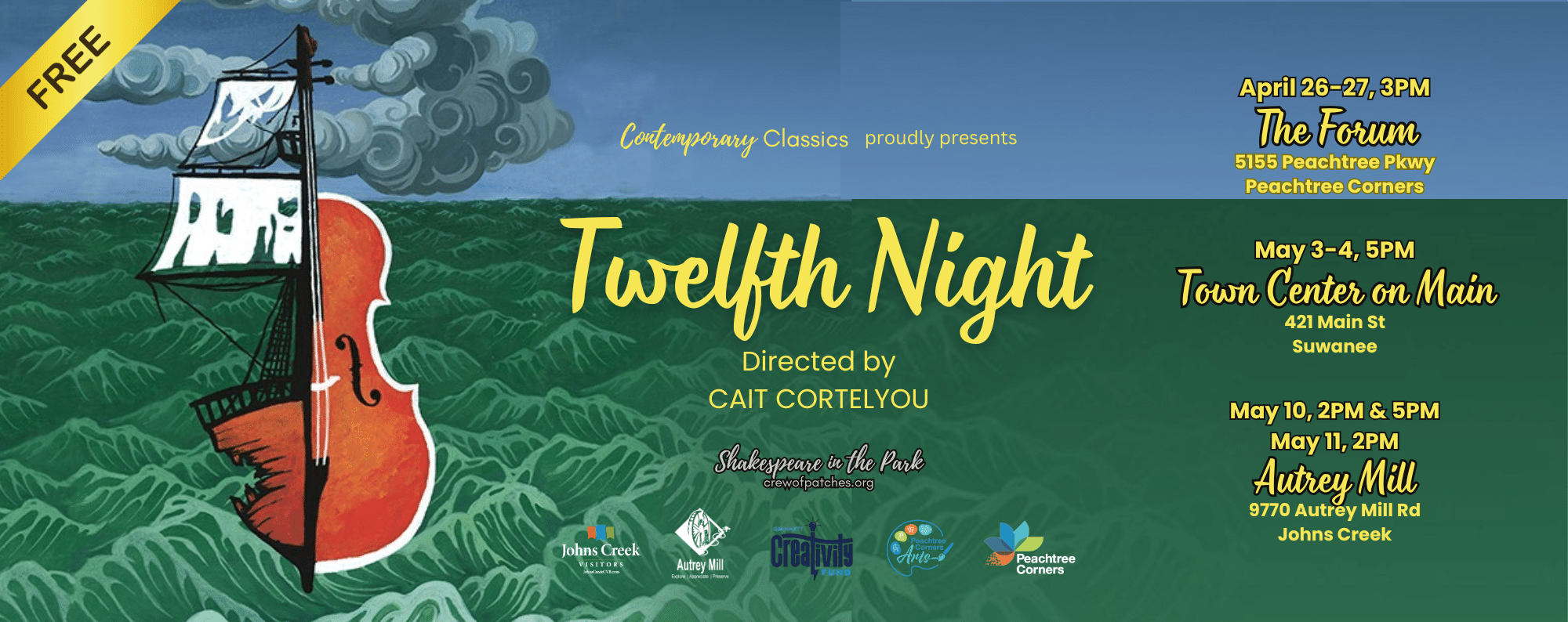
Contemporary Classics Theatre will present Twelfth Night, a free “Shakespeare in the Park” experience at three beautiful outdoor venues in north metro Atlanta
Twelfth Night, William Shakespeare’s romantic comedy of mistaken identity, will play at three beautiful outdoor venues in north metro Atlanta from April 26 to May 11.
Directed by Cait Cortelyou, known for her award-winning feature film “Ask for Jane,” Twelfth Night is a rollicking ensemble comedy explores unrequited love, misperceptions and the instability of gender.
Set in the coastal town of Illyria, young Viola survives a shipwreck and finds herself alone, believing that her twin brother died at sea. Disguising herself as a man, she finds work with the Duke Orsino, quickly falling in love with him. Orsino, however, is in love with the Countess Olivia… and Olivia quickly falls for Viola.
Meanwhile, Olivia’s steward Malvolia has bullied the household for the last time — and the staff is out for vengeance.
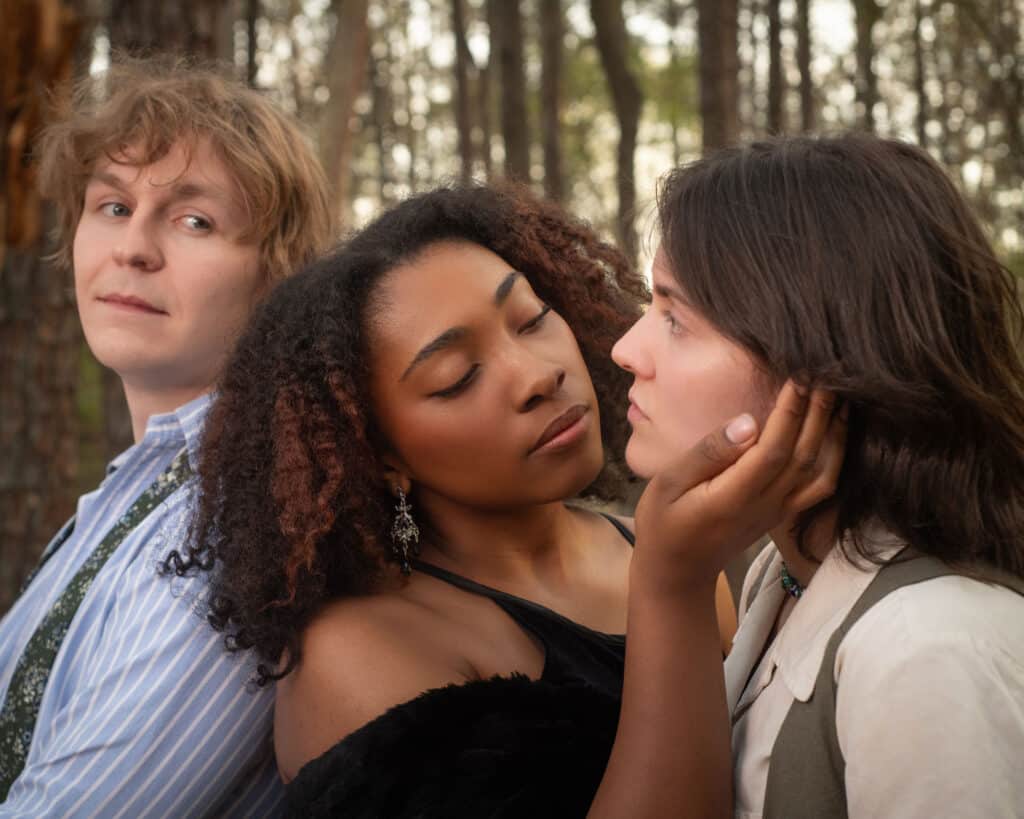
This timeless production of Twelfth Night features Allen Cox, Carl Fisk, Ryan Hutchins, Shem Louis, Susanna Lyne, Steven Medina, Matt Metzger, Danielle Montgomery, Macros Nora, TJ Sanson and Elliott Posadni as one of the first transgender actors to play Viola.
It also features costumes by artist Jordan Hermitt and production design by Sage Kim Gray.
Locations, dates and showtimes
The Plaza at The Forum Peachtree Corners • April 26–27 at 3 p.m.
Audience seating and a special musical performance will start at 2:30 p.m. Please note that seating is limited; arrive early and/or bring lawn chairs or blankets. Food and drink are available for purchase at the venue.
Town Center on Main, Suwanee • May 3– 4 at 5 p.m.
Audience seating and a special musical performance will start at 4:30 p.m. Please note that no seating is provided; bring lawn chairs and blankets. Coolers are welcome (no alcohol). Food trucks will be onsite at the venue.
Autrey Mill Nature Center, Johns Creek • May 10 at 2pm & 5 p.m.; May 11 at 2 p.m.
Audience seating and a special musical performance will start at 1:30 p.m. on both days and at 4:30 p.m. for the evening show on May 10. Limited bench seating only. In case of inclement weather, the show will move from the amphitheatre to the open-air Pole Barn nearby.
Admission to the shows is FREE. Register online for tickets.
About Contemporary Classics
Contemporary Classics exists to challenge and transform classic Western theater traditions by creating an inclusive community of diverse people, ideas and cultures. They believe that classic work is made even greater when performed by a larger variety of artists — especially those who have been marginalized by Wester theatre traditions — including women and people of color.
With no permanent home, the theatre company partners with places such as public parks for performance spaces. This “homeless” state is one of the reasons they call ourselves “a crew of patches”— they travel from “patch” to “patch” with their shows.
The name also comes from a line in A Midsummer Night’s Dream, and reflects the “motley” coat of a Shakespearean clown (or fool), created by sewing patches of old or discarded clothing together in a mishmash of textures and colors, like a patchwork quilt.
Fools, or “Patches,” transcend societal norms by being simultaneously a part of society and outside of it, giving them the ability to examine and comment on it.
For more information, visit crewofpatches.org.
Related
Arts & Literature
From Food Creations to Handmade Jewelry: Wesleyan Kids Prep for Artist Market 2025 [Podcast]
Published
2 months agoon
April 7, 2025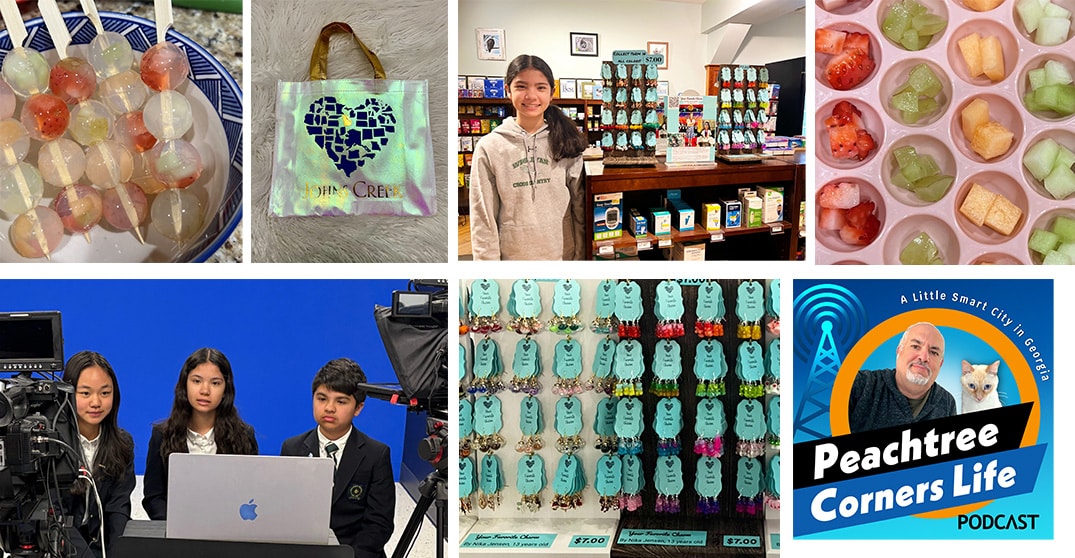
In this episode of Peachtree Corners Life, host Rico Figliolini spotlights three remarkable student artists featured in this year’s Wesleyan Artist Market. Eighth graders Kimberly Wang and Nika Jensen, along with sixth grader Carter Jensen, share their creative journeys—ranging from edible art like fruit jellies and peppermint bark to handmade jewelry and custom-designed bags.
Kimberly talks about her love for food art and balancing sweetness with fruity freshness, while Nika and Carter discuss building a jewelry business that also gives back—donating proceeds to families in the Philippines. This isn’t just an artist market; it’s a showcase of purpose-driven, globally inspired young talent. The event runs April 25–26 at Wesleyan School and is open to the public.
Podcast Takeaways:
- Kimberly Wang creates handmade edible treats, balancing flavor and freshness for the show.
- Nika and Carter Jensen co-run a jewelry and fashion accessory business, inspired by global travel and cultural experiences.
- Nika donates part of her proceeds to support families in the Philippines.
- All three students are deeply involved in extracurriculars—from musicals, marching band, math club, and academic bowl.
- The Wesleyan Artist Market features 24 student artists and over 70 professionals—open to the public April 25–26.









Timestamp:
00:02:19 – Student intros and extracurriculars
00:03:06 – First-time participants and motivations for joining
00:04:13 – Kimberly’s edible art and recipe testing process
00:05:16 – Nika and Carter’s jewelry and bag design business
00:07:06 – The reward of watching people enjoy your creations
00:08:20 – Donating art profits to support families in the Philippines
00:10:39 – Future aspirations in medicine and law, with art as a passion
00:12:06 – Behind-the-scenes logistics of preparing for the market
00:13:25 – Global travel inspiration: 73 countries and counting
00:17:19 – Where the students draw artistic inspiration
00:20:04 – Custom requests: From peppermint bark to Lego earrings
00:21:16 – Anticipation and excitement for this year’s market
00:22:29 – Reflections on Wesleyan and the artist experience
Transcript:
00:00:01 – Rico Figliolini
Hey, everyone. This is Rico Figliolini, host of Peachtree Corners Life. We have a great set of guests today. Because of the upcoming Wesleyan Artist Market, we thought we’d do some interviews with student artists. Three of the 24 that are going to be at Wesleyan Artist Market. So they’re with me here today. So we’re going to get right into that shortly. I just want to say thank you to our corporate sponsors. So I want to say thank you to EV Remodeling, Inc., based here in Peachtree Corners. The owner is Eli. Him and his family live here. They’re great. They do a lot of design work, design your space. Essentially, any home remodeling you need from whether it’s your kitchen, your bathroom, or a whole house remodel, or even an addition to your home, think about it, whatever you need, Eli can handle. So check them out. Go to evremodelinginc.com and find out how they can design your space and your life. Our next sponsor just came on, and they’re Vox Pop Uli. I want to thank them for joining us as well. They deal with all sorts of things you can imagine putting your logo on, similar to a little bit about what these kids do, right? They’re creating artwork. They’re creating a brand for themselves. And so this is what Vox Pop Uli does, right? They’ll take your brand and bring it to life. Essentially, anything that you can think of that would go on apparel, whether it’s sweaters or T-shirts or wherever you want to put your brand engraving, your logo, what object you want to put it on, even vehicle wraps. So if you’ve got a truck, you want to put a whole wrap around it, check them out because they can do that. They’re here in Peachtree Corners and they’re called Vox Pop Uli. So visit their website. I’ll have the links in the show notes as well. So thank you guys. I appreciate your support. So now let’s get right into it. Let me introduce our three artists, great Wesleyan students. Can’t wait to start talking to them. We have Kimberly Wang first on your left, on my left, and Nika and her brother Carter Jensen, who work together creating the artwork they do. So I’m going to ask you guys just to, you know, give me a little background. Tell me who you are, your grade, what you do, extracurricular, stuff like that. This way our audience can get to know a little bit more about you. So let’s start with Kimberly Wang. Hey, Kimberly.
00:02:19 – Kimberly Wang
My name is Kimberly Wang. I’m in eighth grade this year, and outside of Artist Market, I do marching band, and I also do the musical production this year, which is Matilda.
00:02:31 – Rico Figliolini
Excellent. What about Nika? How about you?
00:02:34 – Nika Jensen
I’m also in eighth grade. My name is Nika Jensen, and apart from doing the Artist Market, I do cross country. I’m also in Matilda this year, and I also do math counts, which is a math club.
00:02:47 – Rico Figliolini
Okay, cool. And Carter?
00:02:49 – Carter Jensen
Hello, my name is Carter Jensen. I’m in the sixth grade. And outside of the artist market, I do academic pool and I also do basketball.
00:03:00 – Rico Figliolini
Excellent. Alright, cool. So have you guys ever done the artist market before? Is this the first time?
00:03:06 – Kimberly Wang
This is my second year doing it this year.
00:03:08 – Rico Figliolini
Second?
00:03:10 – Nika Jensen
Yeah, this is our first year because we’re new students this year.
00:03:13 – Rico Figliolini
Alright, cool. What inspired you to get into it, Nika?
00:03:17 – Kimberly Wang
Well, I had my own business before we came to Wesleyan and so I thought that the artist market is a good way to like show my business to other people in our community. So yeah.
00:03:30 – Rico Figliolini
And you brought in your brother Carter to help you with?
00:03:35 – Nika Jensen
Yes, sir. He’s also part of the business.
00:03:39 – Rico Figliolini
Alright cool. Okay so, Kimberly. Food. Food is art, right? I’m sure your mom would probably say, it’s food, just eat it. But you’re playing with your food, essentially. What they used to tell you not to do, right? So when you create your food art, what do you think about? How do you go through this? How do you choose what you do and what do you exactly do?
00:04:13 – Kimberly Wang
So this year, I am making fruit jellies and peppermint bark. And when I think about what creations I want to make for the artist market, I go online and I look through like, what are some popular desserts that a lot of people like? And once I like choose my items, then I go through
the recipe and then I do a lot of trial and errors to make sure that like the products are like healthy and they taste well.
00:04:42 – Rico Figliolini
So they have to be edible, right? Because this is edible art?
00:04:45 – Kimberly Wang
Definitely, yes.
00:04:46 – Rico Figliolini
So are you eating a lot of the edible art before you get to what you need?
00:04:50 – Kimberly Wang
Not really. I don’t usually taste a lot of the food. I let my family taste it.
00:04:56 – Rico Figliolini
Ah, good. I like that. Yes. Get them to participate. Cool. So edible art, that’s one way of doing it. Jewelry, that’s something else, right? Wearable. How do you guys, Nika, Carter, how do you get to the place of what you do?
00:05:16 – Nika Jensen
So I started my business when I was 11 years old and it started like I got my first jewelry making kit and I kind of just expanded from there. So like I usually use Amazon to search and find like the prettiest designs like of earrings and pendants and get opinions from other people like my mom and my family to see like if they think it’s like wearable and if they like it. So I browse on Amazon for a while and I find like the best and high quality products and then I hand make them at home usually like every day after I come home from school so and my brother he does something else and he can tell you about that.
00:06:01 – Carter Jensen
I, my sister, she got a Cricut machine for, like, her 12th birthday, I think. And started making these, like, iron-on bags with the Cricut machine and, like, making them based on, like, Georgia and, like, Wesleyan and designing it based on fashion.
00:06:19 – Rico Figliolini
Alright. Cool. So let’s get back to Kimberly. The food that you do. Do you have particular flavors you like? Do you have particular areas that you stay in?
00:06:33 – Kimberly Wang
So this year I’m trying out like something more sweet with chocolate. But last year I definitely went for more of like the fruity side. And I think I like to keep it like a balance. So that way one is not overpowering the other. My personal favorite will probably be fruit because it’s healthy. And I mean, it just tastes good in general.
00:06:56 – Rico Figliolini
Okay. Alright cool. What’s the most rewarding part that you can think of, of making edible art?
00:07:06 – Kimberly Wang
Well, I mean definitely like you said before you get to eat a lot of food. I mean, I did say before that I don’t eat a lot of the creations I make, but sometimes I still do eat it. And so I think it’s also really rewarding to see like people try out your creations and see like their reactions to what they think of it.
00:07:27 – Rico Figliolini
So when, I know I’ve spoken to other artists when they sell their artwork like paintings or stuff like that they get a chance to see it sometimes when the fan that bought it if you will, would send them a picture of where they hung it right? Yours disappears right?
00:07:45 – Kimberly Wang
Yeah, exactly.
00:07:47 – Rico Figliolini
Yeah I guess, there’s no way to, short of doing a selfie with it or taking pictures of it, there’s no there’s no permanency to it so how does that feel?
00:07:57 – Kimberly Wang
I mean well as long as the people enjoy it that’s good. And I mean I think mainly it’s about like the memory that you have of having the food and if you like it then it stays as a good memory for you and if you don’t then I mean you can always try out different things.
00:08:20 – Rico Figliolini
Okay. Nika, Carter, as far as the jewelry goes the, you’ve used it to raise money to support children in the philippines? yes
00:08:29 – Nika Jensen
Yes sir.
00:08:31 – Rico Figliolini
Is that, is that how you started this when you were 11? Is that the reason?
00:08:35 – Kimberly Wang
No, so I was like 11 during the pandemic. So I was always looking for a way to express my creativity. And so that’s how I started my own business. And so I was selling at my uncle’s pharmacy and I was saving up the money to use for like college or for like other events later on in my life. But this last year and a half before this school year, we were living in the Philippines. And so I was really touched by all of the families there. And we even did something similar where we gave out food and canned goods over Christmas to poor families there. So that just
really touched me. And so ever since we got back to America, I’ve been donating part of my profits to other families in the Philippines.
00:09:24 – Rico Figliolini
Carter, did you end up going on that trip as well?
00:09:28 – Carter Jensen
Yeah, I was with her. We stayed there for about a year and a half. We also did schooling there.
00:09:36 – Rico Figliolini
It’s interesting brothers and sisters, I have three kids and you know growing up brothers and sisters always there could be dynamics there. So how do you get along? Do you ever say to your sister, I don’t know about that. You know that might not look as good, that might not sell. Do you give good feedback? I mean how do you praise her or how do you work together?
00:09:58 – Carter Jensen
She’s more of the leader of the business so like I usually just like try to like agree with her and like yeah.
00:10:12 – Rico Figliolini
Alright that’s cool well you need a leader of the pack sometimes right? So Nika the artwork that you do, you know this is part of what you do you’ve mentioned other things you do right? I know you’re young, you all are, you know you’re not old enough to really think well maybe you are to really think what you want to do with your life right? Is art something that you want to keep as part of what you’re doing in your life?
00:10:39 – Nika Jensen
It’s definitely something that’s of great value to me, but I kind of want to pursue the medical field, but art is also really important to me.
00:10:49 – Rico Figliolini
Okay. Sounds good. Same question to Kimberly. What about you? How do you feel about the work you do?
00:10:57 – Kimberly Wang
I definitely enjoy making food, but like Nika said, I was also really interested in the medical field. And so like I’m not really sure if I’m going to continue pursuing this. But I mean it’s definitely brought me a lot of joy while doing food art.
00:11:15 – Rico Figliolini
Okay. Medical field both of you, that’s cool. What about Carter? How about you? 00:11:19 – Carter Jensen
I kind of like, I like doing art it’s one way to like express your creativity as my sister said. But I also kind of, I’m not really sure what I want to do when I grow up, maybe be a lawyer.
00:11:33 – Rico Figliolini
Okay. Well, artwork gives you a chance, right, to play a little bit, to be able to also see how people, like Kimberly, like you said about how when people see your food or taste your food and your food art, if you will, and it gives you a chance to see how people appreciate what you’re doing, I think, right? The challenges of making food art and keeping it fresh and making sure you’re going to deliver it on the right way I guess at the Wesleyan artist market, how do you how do you handle that part of it?
00:12:06 – Kimberly Wang
So for me the night before each day of the selling I would stay up really late and I make all my products so they’re all fresh and they’re all new. Because I want the best for the people that are eating the food because I don’t want anything to go bad overnight and so I make sure that it’s always new products and I make it, yeah.
00:12:32 – Rico Figliolini
We don’t have the same issue with the jewelry that you do, Nika. So that could last forever, right? But putting it together, sourcing the supplies, right, of what you do, the logistics of it, I guess. How do you handle that? Like getting all the materials together? Do you order it all on Amazon?
00:12:52 – Nika Jensen
Yeah, I order like 99% of all of my things from Amazon. And then since I already have the materials shipped to me, then all I have to do is just create them from my house. So it’s easier for me than having to go out and buy supplies at stores.
00:13:11 – Rico Figliolini
Sounds good. What inspires you as far as jewelry goes? I know that you said you look online to see other things and what the trend is. So where do you find most of your trends? Is it just on Amazon or is it social media, other places?
00:13:25 – Nika Jensen
I kind of observe other people and like what they wear and also social media. And I get a lot of inspiration also from like nature and from like my travels. We’ve been to a lot of countries in the past five years, 173 countries.
00:13:44 – Rico Figliolini
How many?
00:13:45 – Nika Jensen
I’m sorry, not 173, 73 countries.
00:13:49 – Rico Figliolini
73 countries?
00:13:50 – Nika Jensen
Yes, sir.
00:13:51 – Rico Figliolini
That you’ve been to in how many years? I can’t even wrap my head around that. How did you even do that? Teleport? I mean, how did you do that? Wow. What is your heritage, if you don’t mind me asking?
00:14:12 – Nika Jensen
I’m half Filipino. My brother and I are half Filipino. And then my father is part Danish and then also American.
00:14:21 – Rico Figliolini
Do you speak any languages?
00:14:23 – Nika Jensen
I speak the language of the Philippines called Tagalog and then English. And I’m learning Spanish.
00:14:30 – Rico Figliolini
Really? Okay. Kimberly, how about you?
00:14:33 – Kimberly Wang
So my mom is Taiwanese and my dad is Chinese. So I speak Chinese, English. I’m learning French and I’m learning Korean.
00:14:43 – Rico Figliolini
Really? Wow. Okay. Speak Mandarin, is it? Okay. My son was learning that for a year and he was, it’s a tough language to learn. But I’m sure being able to travel for example Nika, to be able to see other other countries and inspiration from those countries. What of the 73, 75 countries you visited what would you say the top five would be for that type of inspiration? Can you pick that up?
00:15:16 – Nika Jensen
I think so. I really like Argentina just because it’s so unique and the culture is just so strong there. Like you really feel so immersed just when you like step into the country. I like Italy, not only because of the food, but that’s also where I got a lot of inspiration for my jewelry. Just like the glass in Venice, like the Murano glass, like that’s also a really big inspiration. In Turkey, that’s when I first like found my interest in jewelry because there was, we went to this bead store and there was like thousands of different beads and I got to like choose different charms and like experiment with creating jewelry. So Turkey, Argentina, Italy, and then I have to give it to the
Philippines, obviously, because we lived there for so long. And then that’s hard. What do you think, Carter?
00:16:12 – Carter Jensen
I like India because I really like butter chicken. Also like Italy because I like pizza and pasta.
00:16:27 – Rico Figliolini
Yes, can’t get any better pizza than Italy, that’s for sure.
00:16:30 – Carter Jensen
Yeah, it’s really good there. And I also like Japan because it’s very futuristic and it’s like…
00:16:38 – Rico Figliolini
Is it?
00:16:39 – Carter Jensen
Yeah, it’s like a new environment and it’s like…
00:16:45 – Rico Figliolini
Yeah, cool. I can’t wait I think where, I think we may be heading there in July so that would be fun. I’ve never been so that would be interesting. Cool so with the artwork, with the inspiration, with the journey that you guys have been on, do you think that, are there any artists it’s hard and food maybe unless it’s Gordon Ramsay or something, but do you draw any inspiration? Who do you draw inspiration from for the work for what you do? Let’s start with Kimberly.
00:17:19 – Kimberly Wang
I don’t really have a specific artist that I look up to but I do watch some cooking shows and some like dessert making shows and they always really inspire me so I feel like that’s what really led me into like starting food art. And so I was like, whoa, this is really cool. And so I was like, okay, let me try this. And so now I’m here and then I’m like, this is pretty fun.
00:17:49 – Rico Figliolini
Oh, okay. Carter, I know you’re not the main person doing the artwork, but what do you see when you’re working with your sister? How does that feel working with her, doing the stuff with her, the artwork? Whatever you’re doing with her, how you know what’s that journey feel like for a brother and his sister?
00:18:13 – Carter Jensen
It’s kind of relaxing doing artwork and like peeling off like the stickers on the bags
00:18:26 – Rico Figliolini
Okay, alright, that’s cool. Sister, how do you feel?
00:18:30 – Nika Jensen
Yeah I just enjoy anytime I’m like I get to make jewelry because I feel like it’s such like an important thing to me. And it also like my brother said it’s really relaxing and just like sitting in our home and just like making jewelry it’s like, it’s really fun for me.
00:18:48 – Rico Figliolini
Do you wear? I’m assuming you wear some of the stuff you make?
00:18:51 – Nika Jensen
No actually I don’t have my ears pierced. And so I just like making it and seeing my creations on other people.
00:19:00 – Rico Figliolini
Okay, cool. Kimberly, do you ever decide, I’ve got to make something, I want to eat something, do you ever decide to do that, or is it always just for the art?
00:19:10 – Kimberly Wang
I think mainly just for the art. Because, I mean, I do piano outside of school, and so most of my time is sucked into that. But, I mean, sometimes if I do want to make something, yeah, I’ll go for it. And I’ll try my best, but it might not be successful.
00:19:31 – Rico Figliolini
Have you ever been, have you ever designed anything custom design? Because someone requested it from you? Like has anyone ever asked Kimberly, has any anyone ever asked yeah can you make that for me? Like aside from the artwork you sell.
00:19:50 – Kimberly Wang
I don’t think so. I did get one request by a high schooler to make peppermint bark for him for his art and science class. But like other than that, no.
00:20:00 – Rico Figliolini
Okay. How about Nika? Have you ever had a request for jewelry?
00:20:04 – Nika Jensen
Yes, I have. So my mom was posting some of my creations on social media and someone reached out to me and she wanted lego earrings like so little like lego figurines as earrings. So I used some of my own legos and then we also bought some but I drilled a hole on top of their head and I had to stick a screw inside. I had to mail it to them. And then they sent me a picture of them wearing it.
00:20:42 – Rico Figliolini
It’s just the way you were describing it, drilling the hole in the head. It’s like, all right, well, that’s good. So there’s the art. You do anything for art, I guess. That’s good. Great. We’ve been showcasing and talking a lot about art here and food and stuff. What are you looking forward to this year’s Wesleyan Artist Market? What is it that’s looking forward? I mean, you have there’s
three of you out of 24 other students. Have you seen or talked to other students and what they’re doing for the show, for the market? What are you looking forward to?
00:21:16 – Nika Jensen
To me?
00:21:17 – Rico Figliolini
Yeah, sure. Let’s go with it.
00:21:18 – Nika Jensen
Okay. Yes. Kimberly and I are actually really good friends so we’ve been like talking with our other friends that are doing the artist market and we’re like you know what they’re selling and yeah. I’m just really excited because we’ve never my brother and I have never done something like this before so I think it’ll be a really good opportunity and it’ll be fun so.
00:21:39 – Rico Figliolini
Something wholly new. That’s good, a good experience. How about you Kimberly?
00:21:45 – Kimberly Wang
Ever since last year, I was really astonished by everything I saw, even if it was like the adult artists, but like the student artists, they were all so talented. I know like a few other people are making food art and people like Nika are making jewelry. And so I’m honestly really inspired and just really blown away by all the effort that everyone puts in.
00:22:13 – Rico Figliolini
Cool. Anything that I’ve not touched on, guys, that you want to share about, individually about what it takes to do what you’re doing or your experience at Wesleyan? Why don’t we start with Kimberly?
00:22:29 – Kimberly Wang
I don’t really have much. I feel like this was a really nice opportunity to be able to share what Wesleyan Artist Market is about and how students have been able to participate in it.
00:22:42 – Rico Figliolini
Cool. Nika?
00:22:43 – Nika Jensen
Yeah so my mom printed out pictures of our time in the philippines so this first one it’s all the bags of food that my old school donated to families in the philippines.
00:23:01 – Rico Figliolini
Excellent. Glad you printed those out.
00:23:03 – Nika Jensen
This is my old class. This was this year when I sent my profits back to the Philippines. And those are all the boxes of food and clothes that they get with that money.
00:23:16 – Rico Figliolini
Wow, you really did make a lot of money.
00:23:18 – Nika Jensen
Yes, sir.
00:23:19 – Rico Figliolini
That’s good. That’s great. And maybe at some point I’ll ask Camille on this, getting some pictures from you all of some of the artwork that you’ve done. I’d love to include that when we post the podcast as well. And if you have any social media where you post your artwork on, if it’s public, feel free. We’re going to be sharing this and we’ll be taking you all as well. I think we got everything covered. I mean, you’re all just unbelievable kids. You’re just doing great work. And I’m just like, it’s always great to talk to you, to Wesleyan students, just like, or to students that are motivated, put it that way, to do things. So glad to see that you’re doing all sorts of things and I still can’t wrap my head around 75 countries, I’m just still trying to think that just like in five years, I can’t even see doing that. But I want to thank you all for for joining me so this is Wesleyan Artist Market you all will be at and that’s April Friday the 25th from 10:00 – 7:00 pm and Saturday April 26 from 10:00 to 3:00 pm. We’ve been talking with Kimberly Wang, who does food art, edible food art, and Nika and her brother Carter Jensen, who do jewelry. Appreciate you guys being with me and being so talkative and just being good guests. So thank you all. Hang in there with me for a second. Everyone else, I want to say thank you again for joining us. You can find out more about Wesleyan Artist Market from just going to wesleyanschool.org or just Googling Wesleyan Artist Market it’ll pop up for you. And it’s open to the public, Friday and Saturday in April. So check them out. Visit the 24 students that are displaying their artwork as well, along with the over, I think it’s over 70 professional artists there. And thank you all from, I guess you’re in Wesleyan Wolf TV station too. So appreciate you doing that with me. So thank you everyone. Stay well.
Related
Arts & Literature
Perimeter Ballet Celebrates 30 Years of Dance and Inspiration
Published
3 months agoon
March 14, 2025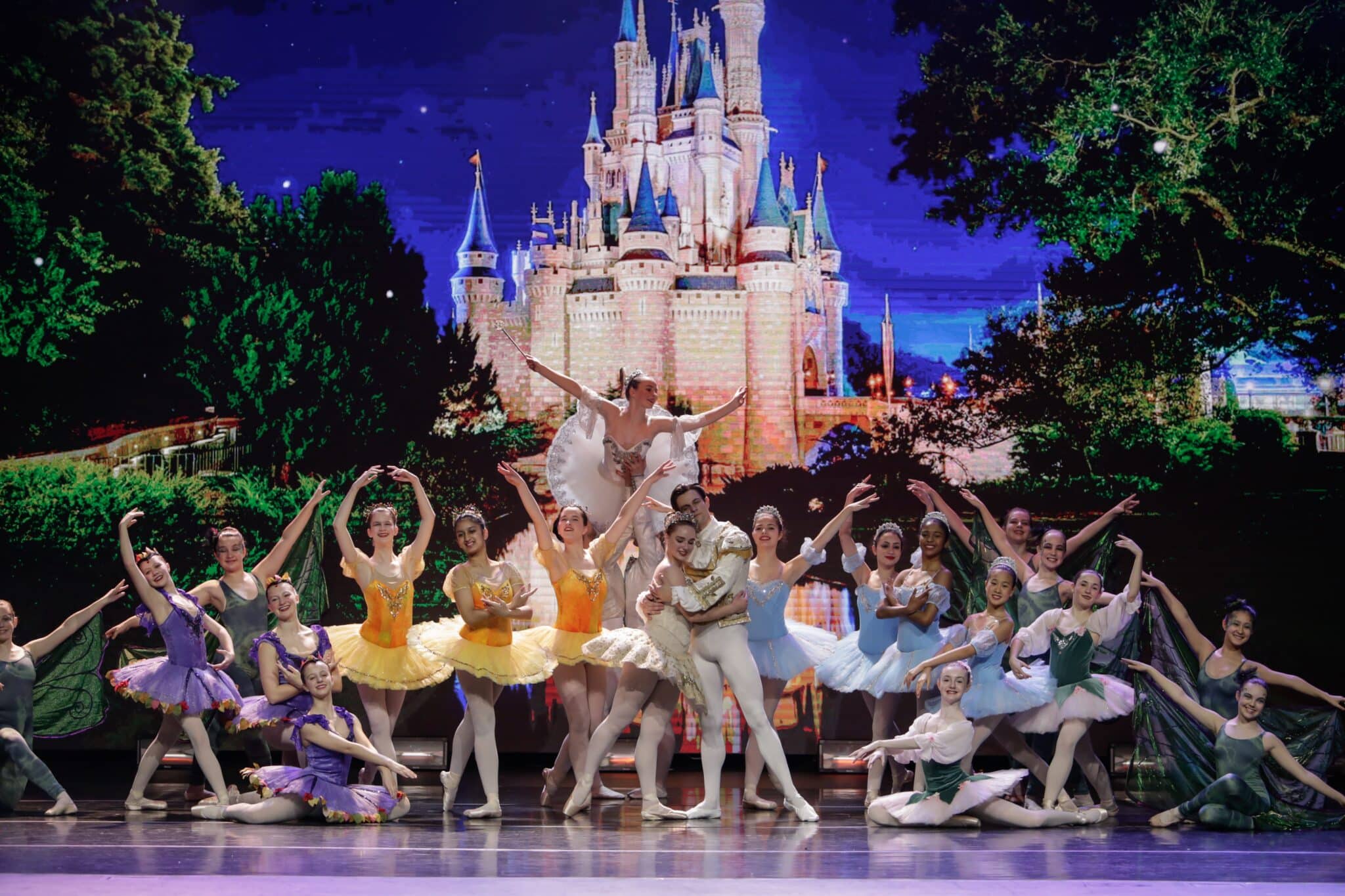
Perimeter Ballet celebrates its 30th anniversary this year. Founded in September 1995, the faith-based ballet school in Johns Creek has long been an integral part of the local arts scene and the community.
What began as a bare-bones program held in the sanctuary of Perimeter Church — on carpeted concrete floors, using the backs of chairs for barres — has grown into a respected school of more than 200 students. Ranging in age from five to 18, the young dancers at Perimeter Ballet are not only committed to the study of dance but also to using their gifts to share their faith.
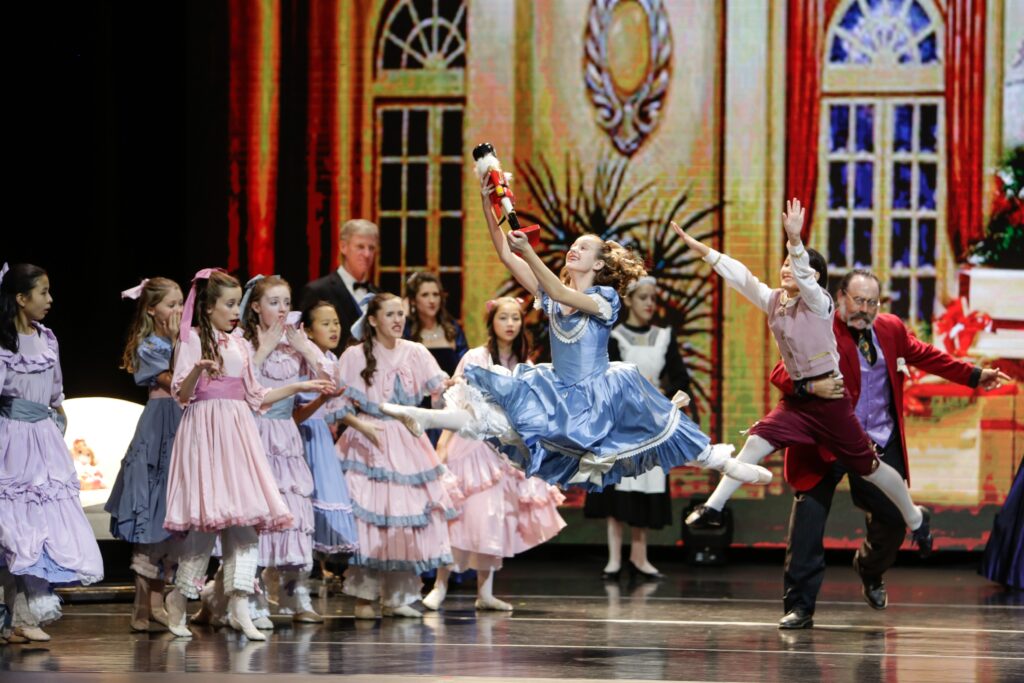
According to the program’s website, their purpose is to “emphasize character along with technique … to counter the natural tendency towards self-absorption in the ballet studio.”
They are “very committed to teaching children to dance — to develop discipline, technique and musicality. [But] the Christian instructors [also] train the students in a context that understands that there’s a reason to dance.”
30 years of dance and faith
Current director, Becky Brown, has led the school for several years, growing the program while faithfully following Perimeter Ballet’s original mission. She oversees weekly classes, summer dance camps and annual productions, including an acclaimed Spring Recital and a presentation of The Nutcracker each December.
For the 30th anniversary, Brown is excited to continue the creative work of the ballet school and share their artistry and message with a larger audience.
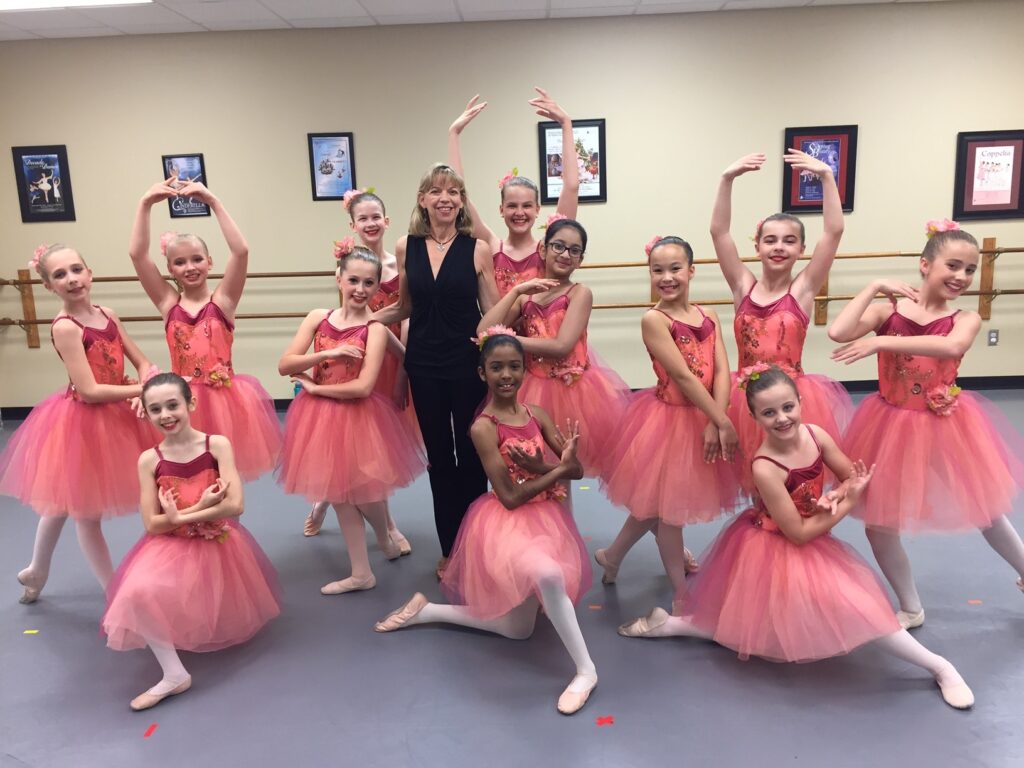
“This year will certainly be a special time for us as we celebrate and look back on 30 wonderful years of Perimeter Ballet and 20 years for our performing company, For His Glory,” she said. “We will be performing the Nutcracker December 11–13 and will have some beautiful new costumes to commemorate the occasion. We look forward to seeing many of our alumni and their families at the performance.”
Classes and instructors
Open to the community at large, weekly classes at Perimeter Ballet range from Creative Movement, PreBallet and grade-level classes for preschoolers through third grade to more advanced classes (two or more times per week) for older students.
Summer camp sessions as well as intermediate level and advanced level intensives are also offered. For the upper-level intensives, students work on their ballet technique but also branch out into jazz and other forms of dance.
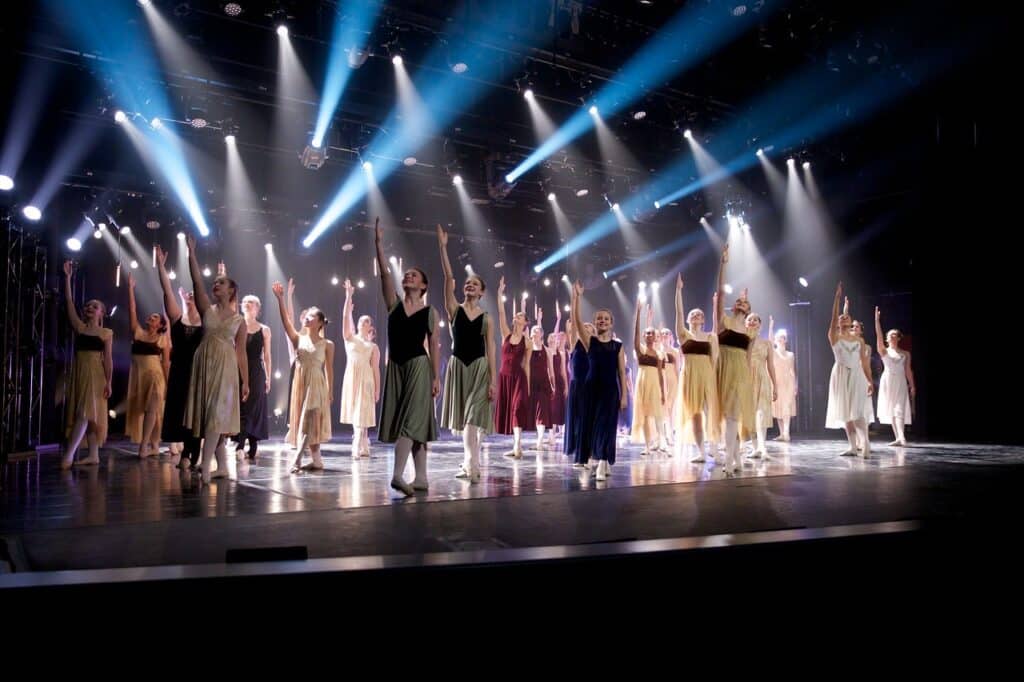
The school’s nine teachers are skilled not just as instructors but as performers themselves, having years of experience dancing with companies such as Ballet Southeast, Atlanta Ballet, North Atlanta Dance Academy and the Metropolitan Opera Ballet. They bring that experience and their Christian faith to all of their classes and interactions with the young students.
For His Glory
In addition to the work they do as a ballet school, Perimeter Ballet also has an audition-selected performance company — For His Glory.
With three levels, made up of dedicated students striving to advance their skills and reach their “God-given potential while giving glory to [their] Lord and Savior, Jesus Christ,” the program presents several high-quality productions throughout the year.
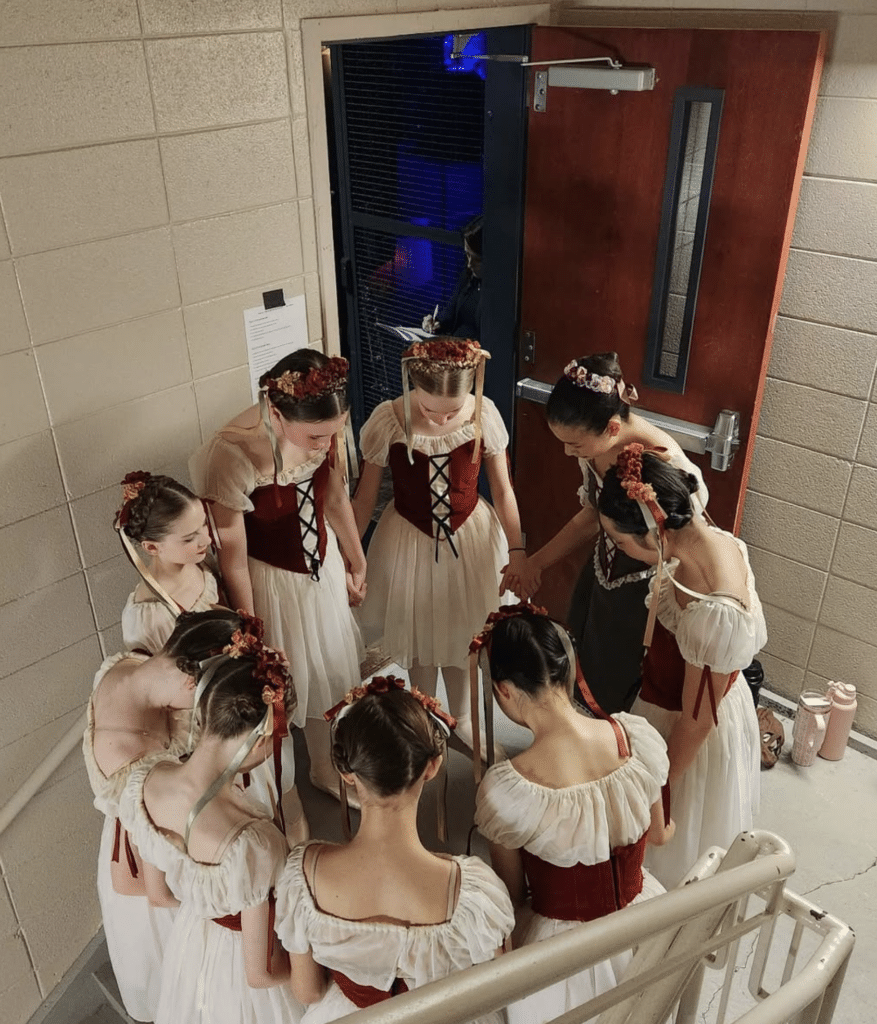
As Perimeter Ballet shares on their website: “Dancers are trained in the ballet classics as well as contemporary forms of dance, which are used in performances, worship settings and outreach. Classical ballets … in the group’s repertoire include Cinderella, Sleeping Beauty, Coppélia, excerpts from Four Seasons and La Fille Mal Gardee. In addition to Christmas and other outreach programs, For His Glory has danced internationally in London, India and Belarus.”
The group most recently performed Beauty & the Beast for two successful shows on stage at the Perimeter Church Sanctuary in early February of this year.
Impact and inspiration
All of this — the focus on faith and commitment to dance, the classes, intensives and stunning productions — have been a decades-long inspiration to the community and especially the student dancers who take part.
Many of the students stay with Perimeter Ballet for much of their childhood, learning and growing in dance as well as in their faith from elementary age through high school. That kind of involvement can clearly impact every aspect of their lives, from discipline learned to how they choose to interact with and be in the world.
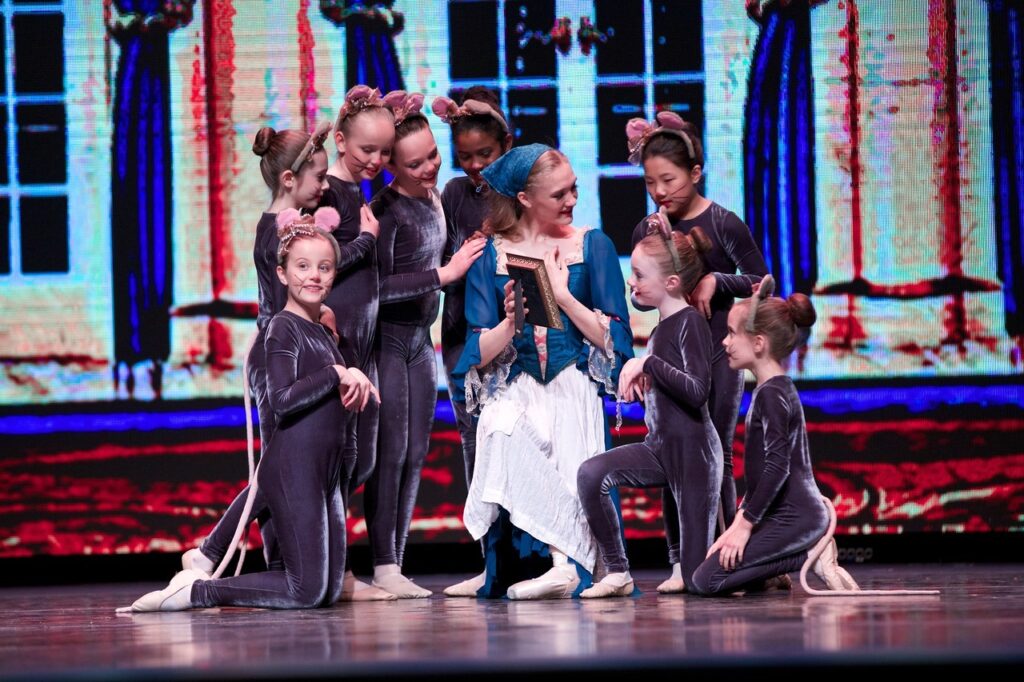
One student, Anne Bradley Maxwell has been taking ballet with the Perimeter program since she was three years old. Now a high school junior in Peachtree Corners, she’s reflected on her time at the school and in the performance company as well as Perimeter Ballet’s milestone anniversary.
“For fifteen years … I matured within this unique, local community arts program,” she shared. “This year marks the 30th anniversary of its founding … and I’m honored to say I’ve been a student for half of that era. The talented instructors in [the] program not only helped advance me into an accomplished ballerina but also into a more faithful servant of Jesus Christ using dance as a form of worship.”
A lifelong journey
“This lifelong journey included annual seasonal training, auditions, numerous external summer intensives and wonderful performances on stages across the nation and abroad, for audiences ranging from a few dozen to several thousand,” Maxwell continued.
“… Taking ballet has instilled in me a deep understanding of perseverance and resilience. Pursuing excellence in ballet required me to overcome physical and emotional challenges … I learned to seek out solutions — whether physical therapy for healing my body or prayer and reflection to rejuvenate my spirit. These experiences have strengthened my ability to face setbacks, adapt and emerge stronger.
Ballet has cultivated in me a unique combination of athleticism, discipline and creative imagination. The most elegant performances emerge from the interplay of technical mastery and creative expression. The collaborative nature of ballet, where individuals work in harmony to create something greater than themselves, informs my approach to teamwork and innovation, both in the classroom and community.”
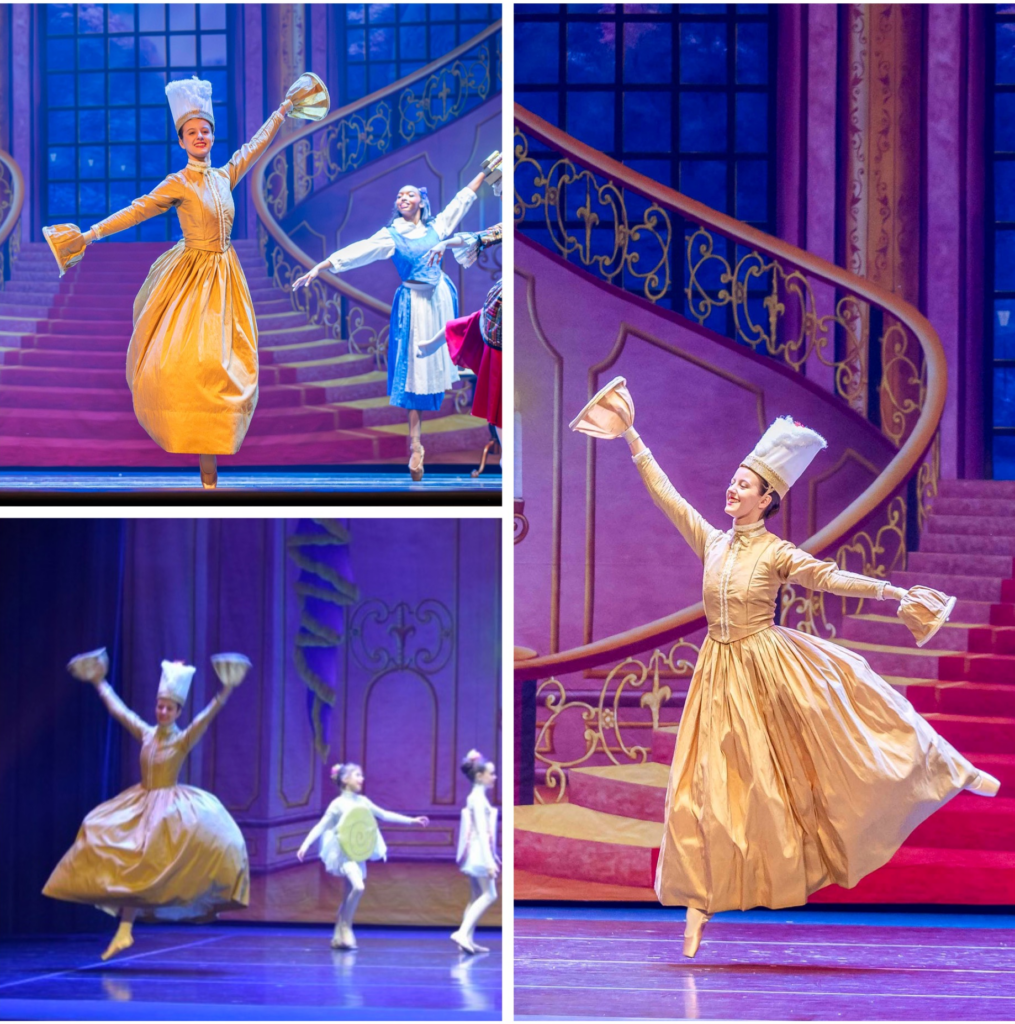
“… Ballet has [also] given me the gift of joy — both in experiencing it personally as a testament to Christ’s goodness and in sharing it with audiences. This joy, while intangible, is a powerful force that I hope to bring into my next chapters following high school. Whether through teaching movement, choreographing performances or exploring ways to expand ballet offerings, I aspire to enrich the community with the beauty and joy of dance.
… My time at Perimeter Ballet has equipped me with perseverance, discipline, creativity and a passion for sharing joy — qualities that I am excited to further cultivate as a young adult. These will not only enhance my personal journey but also contribute meaningfully to the rich tapestry of life. As I enter my senior year later this fall, I am full of gratitude for the solid foundation of technique and creative expression honoring God as the giver of my talent.”
Upcoming events
Perimeter Ballet’s Annual Spring Recital will be held in the Perimeter Church Sanctuary on Thursday, May 1 and Friday, May 2 from 7 p.m. to 8:15 p.m.
Summer camp sessions are scheduled for June and July. Registration will open on April 15.
2025-2026 classes will start in August with registration opening on April 15.
With help from Anne Bradley, the school is also planning a fundraiser event later in the year to mark the 30th anniversary.
For more information, visit perimeterballet.com.
Related
Read the Digital Edition
Subscribe
Keep Up With Peachtree Corners News
Join our mailing list to receive the latest news and updates from our team.
You have Successfully Subscribed!

Guardians of the Jukebox to Play the VoxStage on May 31

“Geek Culture” Shines at 2025 MomoCon

Brandon Branham Honored for Transformative Leadership in Peachtree Corners

Music Matters Productions Expands Peachtree Corners Headquarters

Celebration and Community: ICAGeorgia Wraps Up School Year with Two Festive Events

Vox-Pop-Uli Launches RED Initiative for Veterans’ Support

The PCBA Awards $500 to Light Up The Corners at After-Hours Event

City Collaborates with DNR for Deer Overpopulation Solutions

City Collaborates with DNR for Deer Overpopulation Solutions

Peachtree Corners Festival Awards Debbie Mason Drama Scholarship for 2025

Vox-Pop-Uli Launches RED Initiative for Veterans’ Support

The PCBA Awards $500 to Light Up The Corners at After-Hours Event

“Geek Culture” Shines at 2025 MomoCon

Celebration and Community: ICAGeorgia Wraps Up School Year with Two Festive Events

Guardians of the Jukebox to Play the VoxStage on May 31

Music Matters Productions Expands Peachtree Corners Headquarters

Light up the Corners [Video]

Capitalist Sage: Business Leadership in Your Community [Podcast]

Cliff Bramble: A Culinary Adventure through Italy

Top 10 Brunch Places in Gwinnett County

A Hunger for Hospitality

THE CORNERS EPISODE 3 – BLAXICAN PART 1

Top 10 Indoor Things To Do This Winter

The ED Hour: What it takes to Remove Barriers from Education
